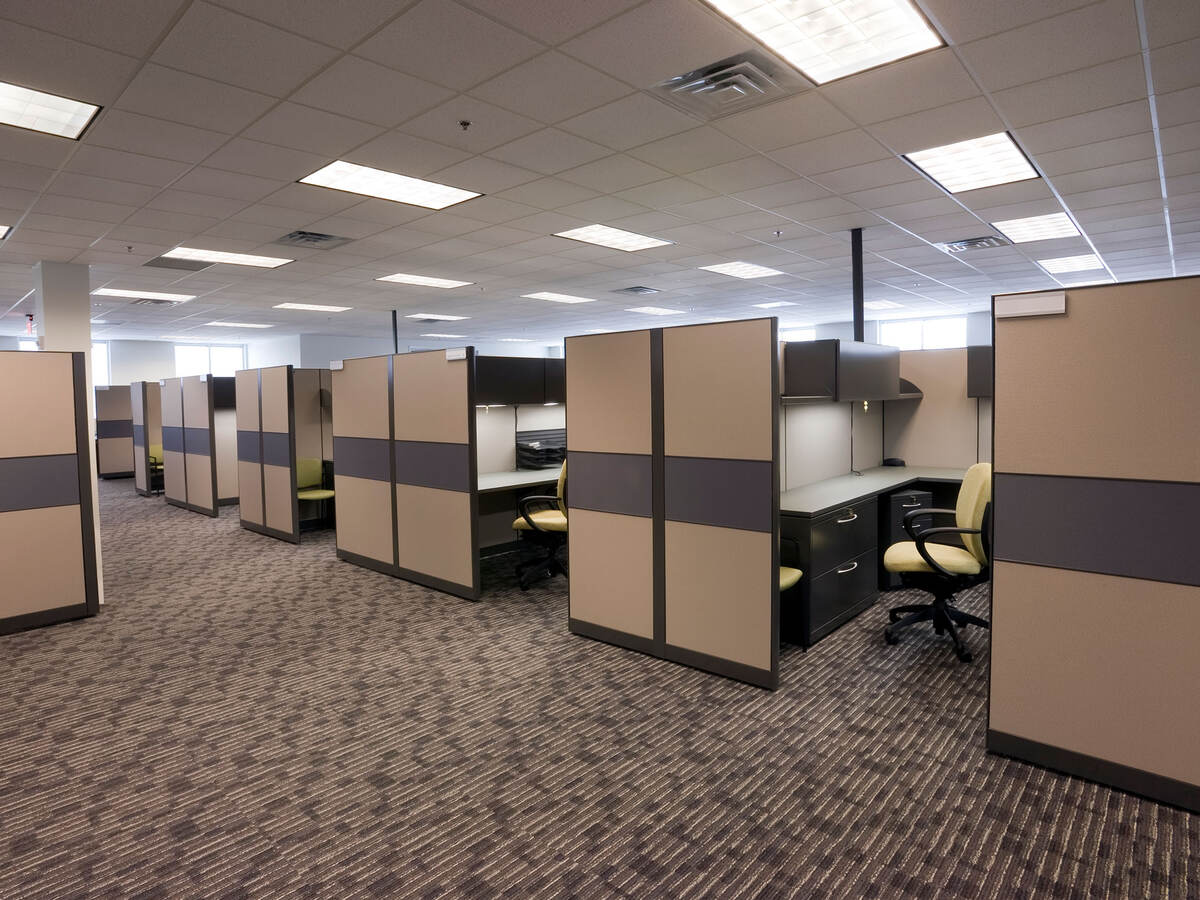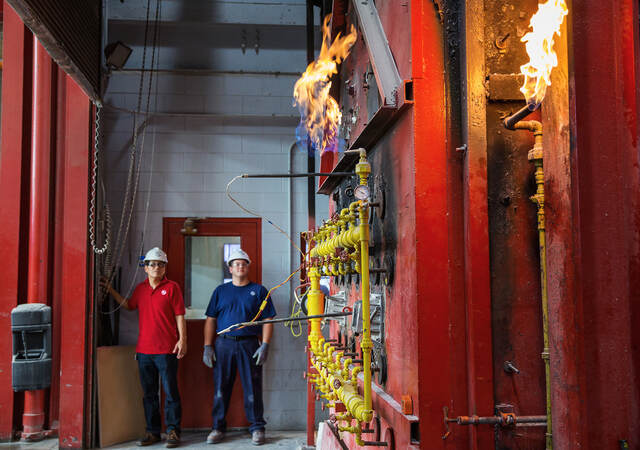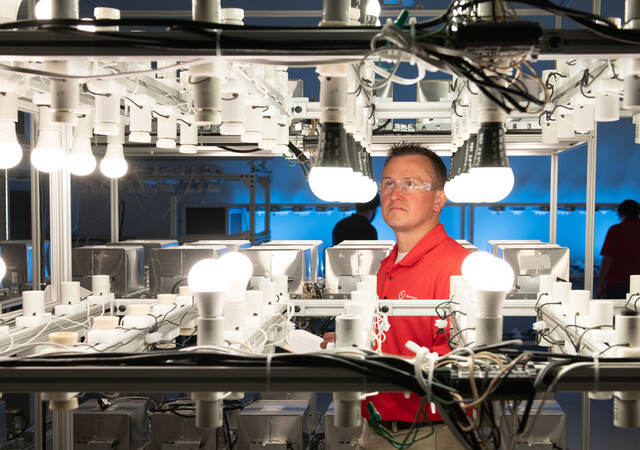When constructing or upgrading a building, it’s critical that it complies with key fire performance standard requirements for effective compartmentation of a fire. One of the main aspects of fire resistance construction ratings is understanding the influence of penetrations, such as luminaires, outlet boxes, ducts, pipes, conduits and more in rated floor-ceiling and/or roof-ceiling assemblies. For our purposes, this article will focus on recessed luminaire penetrations and highlight specific requirements, practices and perspectives that can be useful for building safety stakeholders, including manufacturers, design professionals, contractors and code officials.
Throughout North America and in many other regions, the fire resistance assembly ratings are determined based on fire tests of full-scale floor-ceiling or roof-ceiling assemblies (approximately 14 ft by 17-1/2 ft) conducted in accordance with UL 263, the Standard for Fire Tests of Building Construction and Materials (ASTM E119, ULC S101). The test assemblies are installed in large test frames in a manner representative of actual installations in buildings. During the fire test, a superimposed load is applied to stress the structural elements of the assembly in a manner that represents design limits. The assembly's underside (i.e., ceiling side) is exposed to fire, with temperatures controlled according to the time-temperature curve from UL 263/ASTM E119/ULC S101.
The test rating criteria require that the assemblies support the superimposed load during the targeted hourly rating period without developing unexposed surface conditions that would ignite combustible materials. In addition, temperature limits are specified on the unexposed surface of the floor or roof (i.e., top side) during the rating period. Temperature limits are also specified for steel beams, steel joists, or other structural steel members of the assembly, establishing the restrained and unrestrained assembly ratings. More detailed information on the test assembly requirements and the rating criteria is provided in UL 263/ASTM E119/ULC S101.
If there is a penetration in the ceiling of a fire resistance-rated assembly from any wide variety of construction products found in these assemblies, its fire resistance rating can be potentially compromised. With specific regards to recessed luminaires, they should only be installed in a fire-resistive ceiling if the luminaires were tested as part of the assembly, or if the luminaires were individually evaluated to determine their effect on the fire-resistance rating. For UL Solutions rated designs, this suitability can be determined by referencing the individual fire resistance-rated assemblies or the UL Certified luminaires on the UL Product® iQ database.
Three scenarios for recessed luminaires in fire-resistive ceilings
There are three approved ways recessed luminaires can be used in fire-resistive ceilings to comply with the applicable requirements. The first scenario is where the fire resistance-rated assembly incorporates UL Certified fluorescent or incandescent recessed luminaires that have a steel housing of trapezoidal or rectangular cross-section as part of the design. These luminaires are commonly called troffers, which are square (2 ft by 2 ft) or rectangular (2 ft by 4 ft) and typically fit into a suspended ceiling grid. When these luminaires are employed as part of the assembly, to reduce heat transmission through the luminaire and into the ceiling plenum, the top side of the luminaires are tented (or boxed) to provide a continuous ceiling membrane over the luminaires. This supplemental protection is field-installed and typically utilizes the same materials as the suspended ceiling. The individual UL Solutions design will detail the construction of the field tenting or boxing and the luminaire area and spacing limitations to maintain the hourly fire rating of the assembly.
Recent research testing by UL Solutions confirmed our historical testing results and experience of design details. It demonstrated that omitting the supplemental protection (i.e., the tenting or boxing) over the troffer luminaires causes significant heat transmission through the luminaire housing and into the ceiling plenum. This can ultimately jeopardize the fire resistance rating of the floor-ceiling or roof-ceiling assembly. The research work facilitated the review of various designs and had the sufficient instrumentation to demonstrate that a troffer luminaire without its required supplemental protection can potentially reduce a two-hour rated assembly to one hour or even less than one hour.
The second method involves fluorescent, incandescent or LED recessed luminaires that have been specifically UL Certified for use in fire resistance-rated assemblies. These special luminaires typically have the protection built into the luminaire and have been shown to provide a degree of fire resistance with the floor-ceiling or roof-ceiling assemblies with which they have been tested. These luminaires are UL Certified under Luminaires, Luminaire Assemblies and Luminaire Enclosures Classified for Fire Resistance (product categories CDHW and CDHW7) in the Product iQ database. The luminaires will be marked with a UL Certification Mark. The Product iQ database indicates the UL Fire Resistance Design Numbers they are UL Certified for use in, along with the luminaire area and spacing limitations.
The third method involves individual enclosures or covers that have been specifically UL Certified for field installation over recessed luminaires that do not have built-in fire protection. The enclosures are typically constructed of fire-resistant and heat-resistant materials such as mineral wool or intumescent material. These have been shown to provide a degree of fire resistance for the unprotected recessed luminaire with the floor-ceiling or roof-ceiling assemblies with which they have been tested. These enclosures are UL Certified under Luminaires, Luminaire Assemblies and Luminaire Enclosures Classified for Fire Resistance (product categories CDHW and CDHW7) in the UL Product iQ database. The luminaire enclosures will be marked with a UL Certification Mark. The UL Product iQ database indicates the UL Fire Resistance Design Numbers and the types of luminaires with which they are certified for use in, along with the luminaire area and spacing limitations.
A newer type of recessed luminaire is the canless, ultra-thin, LED wafer luminaire. This type of luminaire has a thin “wafer” metal or plastic housing that is typically secured in a circular opening of the ceiling membrane with spring clips. Unless a wafer luminaire has been fire tested to UL 263/ASTM E119/ULC S101 in a full-scale, loaded assembly, installing it in the ceiling membrane of a fire resistance-rated floor-ceiling or roof-ceiling assembly without supplemental protection over its top side may jeopardize the fire resistance rating of the assembly. This is based on test experience and was supported by the aforementioned research testing for the troffer luminaires which showed that omitting supplemental protection and having a non-continuous ceiling membrane can drastically reduce the fire resistance rating of the assembly. Therefore, if the wafer luminaire was not evaluated in a full-scale, fully loaded fire test per UL 263/ASTM E119/ULC S101, and if it does not have field-installed supplemental protection, then the building safety stakeholder needs to carefully consider its acceptability for use in a fire resistance-rated floor-ceiling or roof-ceiling assembly.
It should be understood that the recessed luminaires alone, or any other component or part of an assembly, are not assigned a fire-resistance rating. Rather, the whole assembly qualifies for a specified rating as a result of fire testing. In summary, there are a few different scenarios where recessed luminaires can be properly employed within a fire resistance-rated assembly in accordance with the UL Solutions designs. As recessed luminaires are one of the most common penetrations in fire resistance assemblies, it is important to know that these products have been tested and evaluated for greater confidence that the assembly will contain a fire for the required time.
For more information related to a product or system listing (certification) from UL Solutions, please contact ULRegulatoryServices@ul.com.
For more information on submitting a recessed luminaire for testing and certification to UL 263 and/or ULC S101, please contact firesafetyquote@ul.com.
Get connected with our sales team
Thanks for your interest in UL's products and services. Let's collect some information so we can connect you with the right person.




